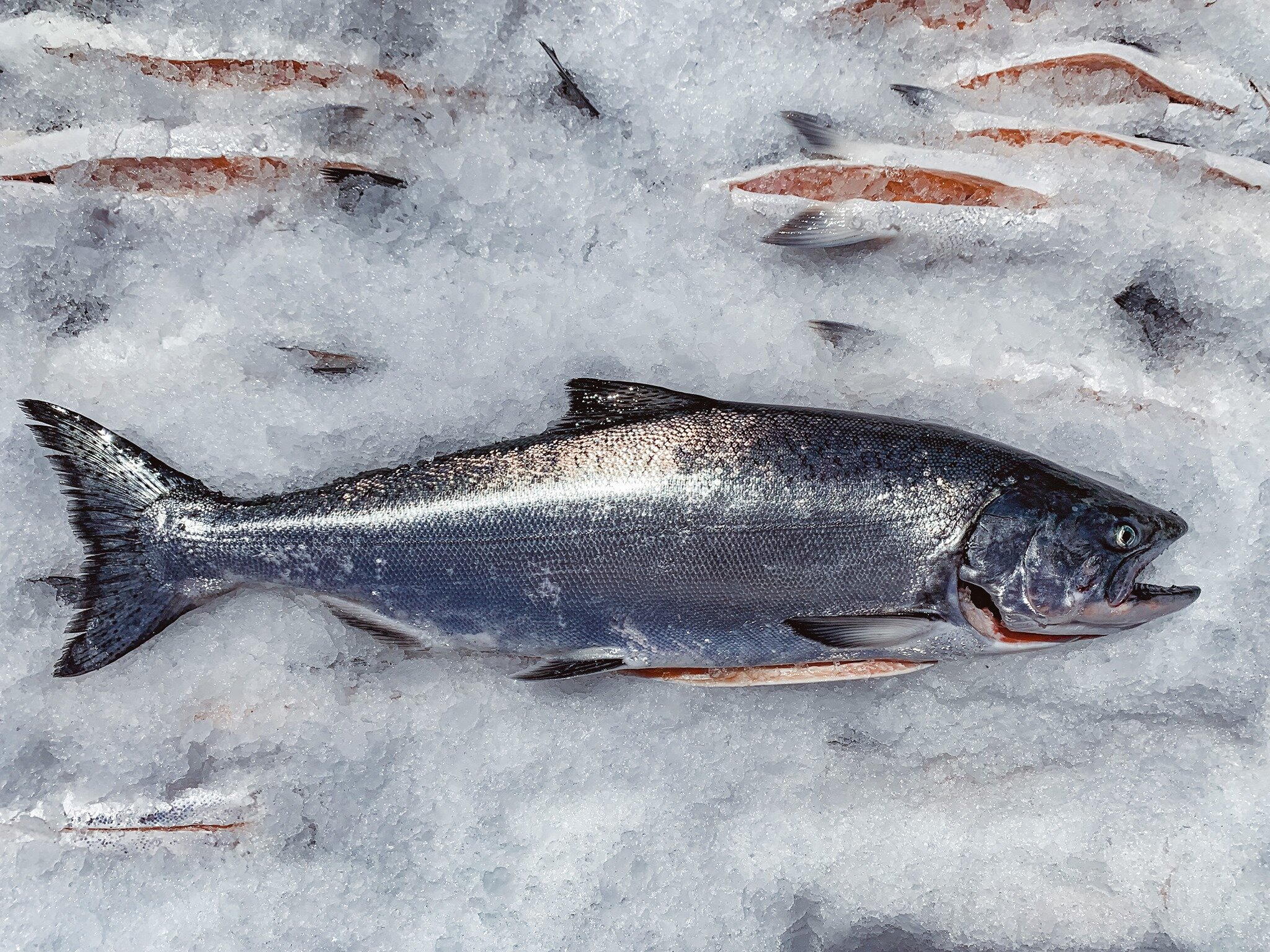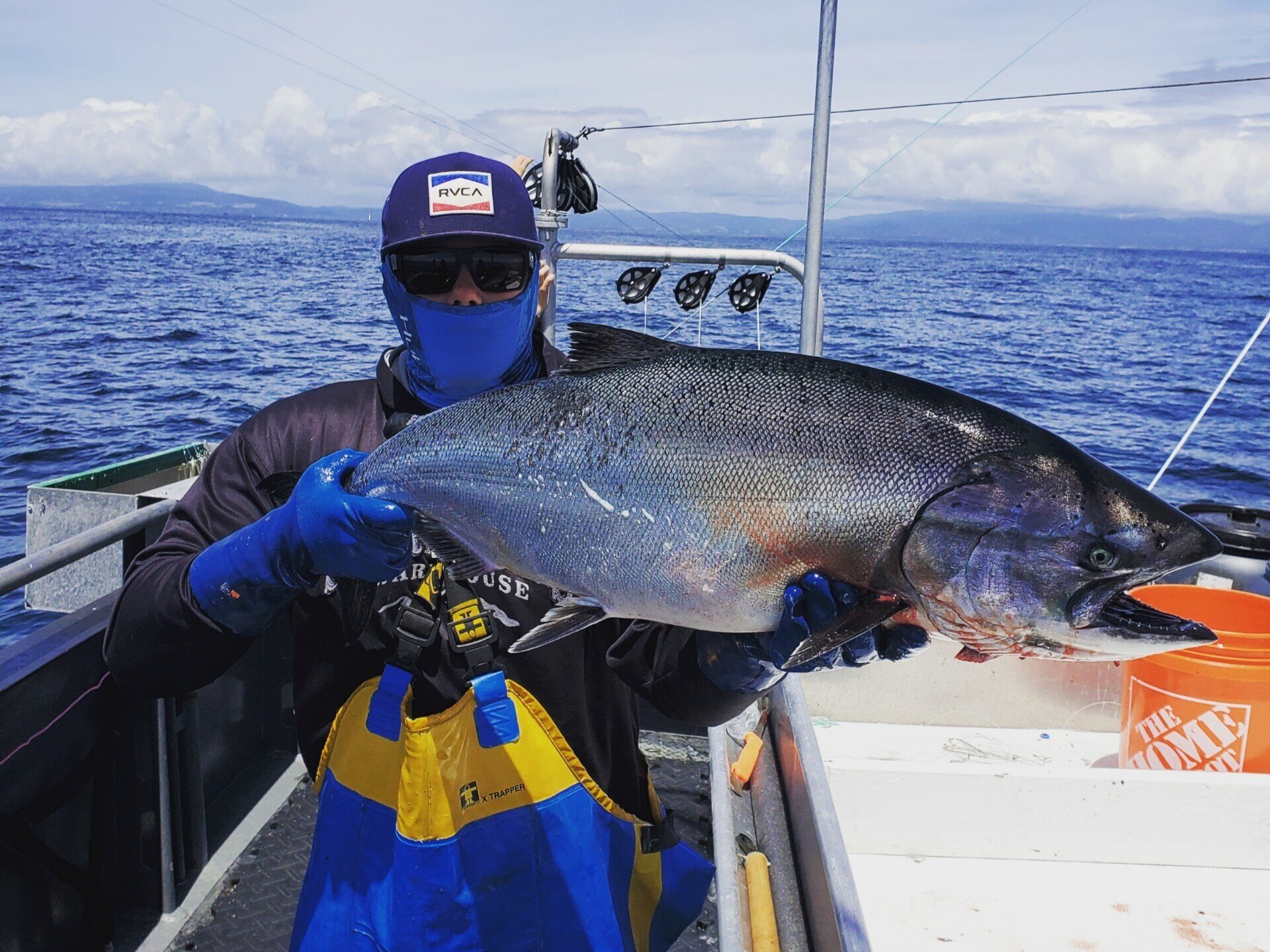Wild King Salmon - When is it in Season and Available?
Photo courtesy of H&H Fresh Fish
While it’s available at some stores year-round as a frozen product, wild, fresh King salmon is only available in California during the summer months, during certain weeks.
Wild-caught, Chinook (King) Salmon is the most prized salmon in California, not only because it is incredibly delicious, nutritious, and the largest of the salmon species caught commercially, but also because it is only available fresh during certain weeks of the summer. Here’s a brief introduction to how salmon seasons are set, and how that affects its availability at fish markets, restaurants, and grocery stores. Read more to learn when to find the freshest, wild King Salmon in the Monterey Bay area!
The Salmon Lifecycle - a brief overview
Salmon hatch and spend the first months of their lives in freshwater rivers and creeks, often miles and miles from the ocean. As they mature, they venture out into the open ocean, where they spend the majority of their lives. When it’s time to reproduce, they migrate to the river mouth that they entered the ocean from, and feed extensively before returning upriver to spawn, and die. There’s MUCH more to the salmon lifecycle, which we’ll save for another post.
Photo: Tim Obert and his crew fishing for King salmon in May 2020
How Salmon Seasons are Set
Each year, fisheries regulators set the commercial and recreational fishing seasons for salmon and other species, taking into account input received from scientists, fishermen, industry associations, tribal representatives, and other stakeholders. The primary factors in season setting (opportunity) are forecasted ocean abundance and escapement goals (“escapement” is the number of salmon that return to fresh water to spawn and complete their life cycle). After a lengthy, and at times contentious, process, the proposed seasons (along with any other management measures) are then submitted to federal regulators for final approval.
Seasonal salmon opening dates are set to make sure fishermen have an opportunity to catch them, but also so that enough fish have a chance to make it upstream to spawn and replenish fish stocks. One way regulators control the amount of fish harvested is by limiting the season to only certain weeks of the summer–which is why some weeks are on, and some weeks are off.
Photo courtesy of H&H Fresh Fish
But why do we see salmon offered year-round at some grocery stores and fish markets?
Frozen, cured, canned and farmed salmon is often offered year-round. Some fishermen and seafood companies freeze wild salmon immediately after catching it, which preserves the flavor and texture. However much of the salmon you see in the seafood counters is farmed and imported. Seafood companies began farming salmon as a way to meet consumer demand for this delicious fish. Farmed salmon is controversial, which is why we encourage you to check the Seafood Watch guidelines that can help you identify farming methods and companies with more sustainable practices.
Better yet, buy wild King salmon caught by local fishermen!
With local King salmon, you’re not only getting to taste this rich, buttery, seasonal delicacy, but you’re also supporting our local economy and supporting a sustainably managed and responsibly harvested fishery.



